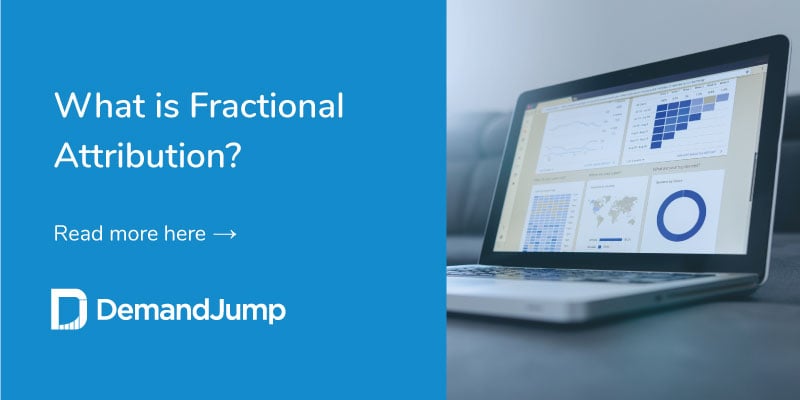If decision making were easy, humans never would have needed to invent flipping a coin, the magic 8 ball, or any of the hundreds of traditional fortune telling methods that span back millennia of human history. And today, sometimes it feels like marketers must use any and all of these methods to understand what will motivate audiences to make a buying decision.
With so many different media channels and pieces of marketing content, is it a single piece of information or the culmination of all that messaging that inspires audiences to act?
Fractional attribution is a form of marketing attribution supporting the theory that many touch points lead someone to make a decision. This attribution model helps you understand which pieces of your marketing funnel are functioning best to lead customers down the right path.
Basic Explanation of a Fractional Attribution Model
Fractional attribution is one of the newest attribution methods in marketing. This method uses machine learning analytics to assign fractional credit to every marketing touchpoint a consumer engages with. Granular data helps determine which channels deserve 9% of the conversion credit, which deserve 11%, and which deserve more. Dimensions like the placement of the content, the creative assets like images, the publisher of the content, and the offer or promotion included are also weighted in the algorithm to help teams truly optimize their efforts and spending.

Other Attribution Methods Compared to Fractional Attribution
Fractional attribution is a type of multi-touch attribution, where multiple touchpoints are given credit for conversions. Single-touch attribution, like first-click attribution or last-click attribution, gives all the credit for the consumer’s business to one piece of content.
But even among other types of multi-touch attribution, fractional attribution is very sophisticated. Position-based attribution models still give weight only to some of the potential touchpoints, based on their location in the journey. Time-decay attribution gives more weight to the more recent touchpoints. While all these methods can teach something about the marketing strategy at hand, none give fractional credit to every touchpoint.
Based on the algorithmic understanding of how well each channel and content type perform, fractional attribution models can even allow marketers to make predictions. By running an analysis testing what might happen if marketing spend is changed, you can test your theories about changes in strategy before implementing them.
Test Every Attribution Model with DemandJump
Like every form of marketing attribution, fractional attribution isn’t perfect. However, it is one of the least biased and most informative attribution models available today. The more fragmented and complex your marketing strategy, including online and offline channels, the more you need a model like fractional attribution to help you understand how each plays a role in your success. Otherwise, your attribution modeling may only show you the high water marks, leaving the content in-between a mystery.
At the heart of DemandJump’s Account-Based Attribution solution are cutting-edge machine learning algorithms, to not only provide cutting-edge tools like fractional attribution, but to allow marketers the ability to switch between attribution models with a single click. The platform provides a comprehensive view of your marketing performance, along with the built-in keyword research and competitor analytics that let you make the most of the insights.
But don’t take our word for it. Try it for free and gain the perspective you need to plan the future of your marketing.

